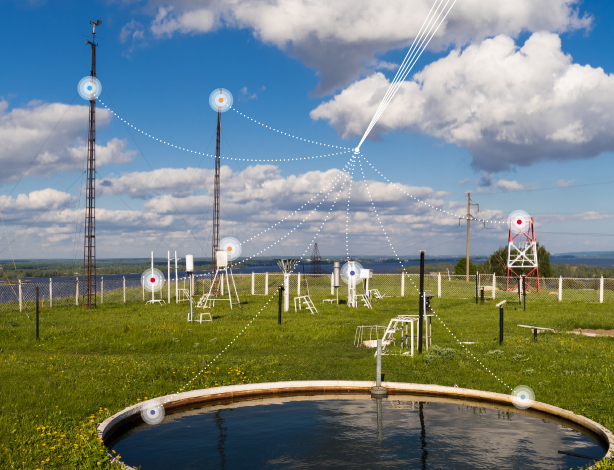
Effective Industrial Data Communications: Finding the Right Solution to Get Data-Driven

With more field devices and sensors in operation, complex and mission-critical business conditions, and constant technological evolution, it is more challenging than ever for industrial enterprises to loop systems together and manage multiple sources of data. As long as this information remains inaccessible or siloed, industrial professionals will not have the power to predict equipment maintenance needs, prevent operational downtime, or optimize processes in an effective or timely manner.
A core challenge is that the traditional SCADA infrastructures these types of enterprises rely on are built for specific data acquisition and control tasks, and not necessarily for capturing large volumes of more granular data for analysis over time. This, paired with the fact that fields are comprised of numerous heterogenous devices that each have a proprietary way of communicating, is why data is still being stranded in the field and how views of operational performance are left fragmented.
We recently published an eBook which takes a closer look at these challenges and how the right data collection and delivery platform can help efficiently overcome them. It details 5 key benchmarks for highly effective industrial data communications, including:
Interoperability
Juniper Research predicts that by 2023, industrial IoT will have over 46 billion active industrial connections. That equates to an unprecedented number of new smart devices that will be deployed – all which need to interoperate with legacy devices already in the field. Implementing discrete communications systems to interact with every device will simply not be feasible, from both a cost and management perspective. A communication platform is required to translate device-specific protocols into an open standard like OPC, the connectivity standard for automation, or MQTT, the leading IIoT protocol. With a single solution for multi-protocol polling, new devices can be readily deployed alongside in-place systems without adding communications management complexity.
Diverse Data Handling
Did you know that as much as 80% of industrial data generated by remote devices is left stranded in the field? While real-time data provides critical in-the-moment views of operational status, it is the archived data that provides insight into performance trends and patterns over time – and that volume of information is more difficult to acquire. Because both types of data are needed to gain a full picture view of operational efficiency, and how it can be optimized, it is critical to have industrial data communications software that supports delivery of real-time and historical values. And, it needs to do so in a way that makes the best use of bandwidth so that more data can be acquired without overwhelming existing data connections.
Flexibility in Telemetry
Expansive and often remote industrial environments must depend on a mix of networking technologies to enable data communications. If any telemetry connection goes down, so does the ability to retrieve needed data. This is especially detrimental when managing mission-critical infrastructures and therefore the industrial data communications solution must account for that possibility. An ideal platform will provide communication redundancy with the ability to poll devices concurrently though multiple types of telemetry. This will also avoid lock-in to specific telemetry methods as your infrastructure evolves.
Read the Rest of the Considerations
Download our eBook, “The Ultimate Guide to Getting Data-Driven”, to explore the other considerations for an industrial data delivery solution that will further propel your competitive edge and ensure preparedness for continued digital transformation.
I also encourage you to reach out to us if you’re interested in how AUTOSOL’s proven platform stacks up against these requirements.
Tags: data management, MQTT, SCADA application
